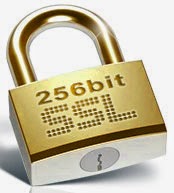 |
| ThinkPad T450s |
Introduction
The ThinkPad T450s is one of the best new ultrabooks. While it's not as thin as some, it's still quite compact, much easier to service than thinner machines, and the Full HD IPS screen is a standout feature.
This review is based on a production ThinkPad T450s, Machine Type 20BX, Product ID 20BXCTO1WW.
- Intel Core i7-5600U Processor
- Windows 8.1 Pro 64
- 14.0" FHD (1920 x 1080) IPS screen
- 720p HD Camera
- Intel HD Graphics 5500
- 4 GB DDR3L - SDRAM 1600MHz Base
- Fingerprint Reader
- 500GB Hard Disk Drive, 7200rpm, 2.5"
- ThinkPad Battery 3 cell Li-Polymer (23.2Whr) Front
- ThinkPad Battery 3 cell Li-Polymer (23.2Whr) Rear
- Country Pack 45W AC adapter United States (2pin)
- Intel 7265 AC/B/G/N Dual Band Wireless + Bluetooth Version 4.0
After receipt (because upgrading was less expensive than buying from Lenovo):
Construction
Quality of
T450s
construction is not up to old ThinkPad standards, with some obvious
cheapening, but is still pretty good. Annoyances include the difficulty
of prying off the bottom cover (after removing 8 screws) to get to the
inside, and fingerprint-revealing textured plastic instead of the old
rubberized finish. But it's quite solid, no flexing, and quite compact.
Connectivity
Port layout is reasonably good on both sides with nothing on the back.
All USB ports are 3.0 with excellent performance. Standard Ethernet port. But Mini DisplayPort
means you may have to buy and carry an easy-to-lose dongle.* Wi-Fi
performance (Intel 802.11ac 2x2) seems better than earlier generation
802.11n Intel cards, even those with 3x3. Bluetooth connections are
fast. Speakers are decent but nothing to write home about. Webcam
quality is improved over earlier generations, but still struggles in low
light. Fingerprint reader is a big improvement. (Thank you, Apple.)
Performance
The good news is that the
Broadwell i7 in the T450s
finally proves to be a bit faster than the Sandy Bridge i7 (T420s) on
processor intensive tasks like video encoding, despite an ultra low
voltage processor running a little slower. The machine is cool and
silent most of the time, with only a soft blowing of air under heavy
load.
Memory
4 GB of memory is
soldered to the main board and there's only one SO-DIMM slot. While you
can add an 8 GB SO-DIMM for 12 GB total, that would mean a third of the memory
would work in single channel mode, which can have a pretty big impact
on performance (as much as 20-30%) especially since the integrated
graphics adapter uses part of main memory (reducing available memory).
So if you care about performance you'll have to stick with 8 GB, which
can be marginal for things like Ultra HD video editing. (The performance
impact, of course, also applies to machines with only the base 4 GB
memory. The promised NVIDIA 940M graphics option is not yet available.)
Screen
The 1920x1080 IPS screen may take some getting used to, but really is a
good deal better than TN screens, and is pretty close to proper
calibration out of the box. (Be sure to burn in the screen for at least
24 hours before making any judgements.)
Keyboard
The island keyboard is pretty good for what it is, but the layout still
suffers as compared to the classic ThinkPad keyboard. Layout of Home
End Insert Delete and PrtSc are poor, and other keys like Pause/Break
are missing entirely, now only available as Fn key combinations (like
Fn+B for Break) that are
not marked on the keys. Also annoying
is the lack of hardware status lights (hard disk, Wi-Fi, Bluetooth,
charging). You can rely on the Windows Task Bar for wireless and
charging, but you'll need to install something like
DiskLED
(which works well) for disk activity. Keyboard backlight is usable
(despite some annoying light bleed from the top row), but not as good as
the classic ThinkLight.
Pointing
TrackPoint performs as expected. TouchPad is greatly improved over recent ThinkPad generation with the return of TrackPoint buttons, nice smooth surface, and good response. Bluetooth works quite well with the
ThinkPad Bluetooth Laser Mouse (recommended).
Power
With just the standard 2nd battery, not the extended battery with big bulge on the bottom, the
T450s
can still be used on and off through an entire day without running out
of battery power. The supplied power adapter is pretty small, but only
45W, so can't fast charge when the system is under load. If you care
about fast charging you should get the optional Slim 65W Adapter.
Summary
A
mostly welcome return to ThoinkPad form, with a very good IPS screen,
and finally enough ultra low voltage processor power to measure up to
Sandy Bridge.
*
Belkin Mini DisplayPort to HDMI Adapter is available at low cost from
B&H.





